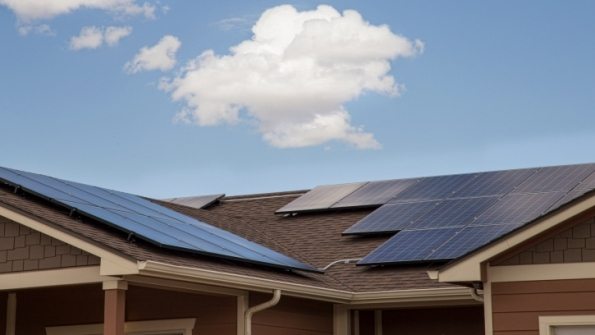
Two new trials in the works by regional WA utility Horizon Power will test two key areas in the new energy landscape: the value to the grid of distributed solar and storage, and the role utility-scale battery storage might play in smoothing and supporting an increasingly renewables-integrated network.
Horizon – whose network averages one customer every 53 square kilometres, and hosts dozens of microgrids and some of Australia’s top rooftop solar postcodes – said on Tuesday it was launching a new trial in the coastal township of Carnarvon to gauge the impact of grid-connected distributed solar and battery storage on its network.

The Carnarvon Distributed Energy Resources trial – for which Horizon is currently looking to recruit about 90 eligible participants with rooftop solar on their homes – is focused mainly on understanding how cloud movements impact on solar PV generation, and how this then affects the network.
Households selected for the trail will have “Solar Smart Monitors” installed at their homes – a solar metering device made by Sydney-based energy data company WattWatchers – to measure how much solar their PV systems generate; how much electricity they use; and how much of this demand is met by solar self generation, at any given time of the day.
The data collected will be made visible to the participating households via an energy management platform designed by fellow NSW company Solar Analytics, which has teamed up with WattWatchers on other such projects.
Both technologies will be provided to the household free of cost, with the option to keep the solar monitor when the three-year trial ends.
Along with this data, Horizon will be using a 3D sky camera to track cloud movements and weather patterns over Carnarvon. The two data sets will then be matched, giving Horizon insight into the impact of cloud events and weather patterns on solar generation and the network.
Horizon said it had chosen Carnarvon as the location for the cutting-edge trial due to its long history of embracing innovation, including the first privately owned solar farm in Australia, as well as its record uptake of solar across homes and businesses.
It is also hoped the DER trial will help the utility develop an advanced model for renewables integration for towns – like Carnarvon – that have reached their current available solar hosting capacity targets. According to Horizon, the town’s average daily load of 6MW is partially supplied by 121 individual PV installations totalling 1.3 MW in capacity.
Speaking at the Australian Energy Week conference in Sydney, Horizon managing director Frank Tudor said the Carnarvon Distributed Energy Resource Trial had the ultimate aim of exploring the most economically efficient ways to design and manage a future grid to reduce dependence on centralised fossil-fuelled generation and reduce carbon emissions.
“This work is really important. The whole world is grappling with the transformation of the energy industry and the transition to renewables and these trials and technologies we are developing will provide some of the answers to the issues being grappled with,” Tudor said.
At the other end of the network scale, another trial – this time at Carnarvon’s 17MW islanded Mungullah power station – will test the ability of a 2MWh grid-connected battery system to provide “spinning reserve” back-up power to help meet peak demand, and to boost its hosting capacity for more renewable energy.
The batteries – already supplied by Chinese company, Tianjin Lishen Battery – will be tested to see if they can rapidly provide energy in the event of a spike in demand or if an existing back-up generator stops running, potentially saving hundreds of thousands of dollars a year in fuel and maintenance costs.
“This is a significant milestone in our transition to becoming the world’s best microgrid company,” said Tudor.
“We have a clear aim to embrace new technology and drive the increased uptake of distributed energy and the capability of microgrid technology.
“The hosting of renewable energy is a challenge for energy utilities all over the world as power stations were not designed to receive energy, but to send it out.
“The intermittent nature of solar, such as when there is cloud cover, can result in frequency fluctuations which trip a power station and impact the reliability of power supplies of all, those with and without solar.
“The management of this issue is critical to the global industry.”

Sophie is editor of One Step Off The Grid and deputy editor of its sister site, Renew Economy. Sophie has been writing about clean energy for more than a decade.
